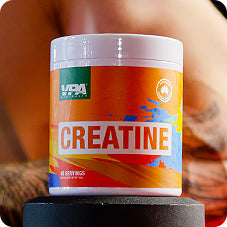Your Cart is Empty
Success with SMART goal setting
September 15, 2023 2 min read

SMARTis an acronym that stands for Specific, Measurable, Achievable, Relevant, and Time-bound. It's a widely used framework for setting and achieving goals effectively. Let's break down each component of SMART goal planning:
Specific
Your goal should be clear and well-defined. Avoid vague or general goals. Ask yourself the following questions to make your goal specific:
- What exactly do I want to accomplish?
- Why is this goal important?
- Who is involved?
- Where will it happen?
- What are the constraints or limitations?
Example of a specific goal:"I want to lose 20 pounds by following a balanced diet and exercising regularly over the next six months."
Measurable
You should be able to track your progress and measure your success. Include specific criteria or metrics to quantify your goal.
- How will you measure your progress?
- How will you know when you've achieved your goal?
Example of a measurable goal: "I will track my weight each week and aim to lose 1-2 pounds per week until I reach a total weight loss of 20 pounds."
Achievable
Your goal should be realistic and attainable given your current circumstances and resources. It should challenge you but not be so far-fetched that it's impossible to reach.
-
Is this goal possible for me to achieve?
-
Do I have the necessary resources and support?
Example of an achievable goal:"Given my current schedule and access to a gym, I can realistically commit to exercising for 30 minutes, five days a week."
Relevant
Your goal should align with your values, long-term objectives, and be relevant to your life. Ensure that it makes sense within the broader context of your personal or professional aspirations.
- Does this goal match my other goals and objectives?
- Is it the right time for me to pursue this goal?
Example of a relevant goal: "Losing weight and improving my fitness are relevant to my long-term health and well-being goals."
Time-bound
Set a specific timeframe for when you want to achieve your goal. This adds a sense of urgency and helps you stay focused.
- When do you want to achieve this goal?
- What is the deadline?
Example of a time-bound goal:"I will lose 20 pounds within the next six months, starting today."
By applying the SMART method, you can transform vague or abstract desires into well-defined and achievable objectives. It also helps you stay motivated and track your progress effectively as you work toward your goals. Remember to review and adjust your goals periodically to stay on track and adapt to changing circumstances.
Also in Featured

Fat burning zones: What is the Best Heart Rate for Losing Fat?
July 29, 2024 5 min read
Discover the science behind fat burning zones and the optimal heart rate for losing fat. Learn how factors influence fat burning, the importance of heart rate monitors, and tips for optimizing your fitness journey. Find out the truth about burning calories and achieving your fitness goals beyond the burn.
Read More
VPA Australia's Christmas in July Gift Giveaway!
July 24, 2024 2 min read
Participate in VPA Australia's Christmas in July Gift Giveaway to win amazing prizes like massage guns, smartwatches, headphones, and more! Find out how to win and get excited for exclusive rewards.
Read More
The Power of V02max: Why Boosting Your VO2 Max is a Fitness Gamechanger
July 15, 2024 5 min read
Discover the importance of boosting your VO2 Max for fitness and performance. Learn how to enhance your endurance and overall health with VPA's featured articles.
Read More Recent Articles
- Fat burning zones: What is the Best Heart Rate for Losing Fat?
- VPA Australia's Christmas in July Gift Giveaway!
- The Power of V02max: Why Boosting Your VO2 Max is a Fitness Gamechanger
- The Fundamentals of Metabolic Health for Fitness Enthusiasts
- Outback Adventure Workouts: Ditch the Gym and Embrace the Winter Sunshine!
- Stress Management for Leaders: Navigating the Challenges with Confidence
- 10 Hilarious Gym Memes Every Gym Rat Can Relate to
- VPA x Muscle Hut
- VPA Australia Teams Up with Renowned Artist Tracey Keller for Limited Edition Shaker
- The Power of the Morning Sun: A Natural Boost for Your Well-being






























